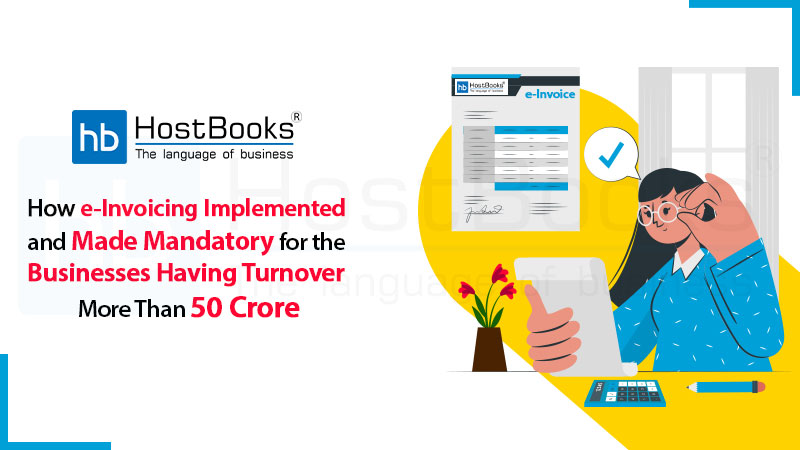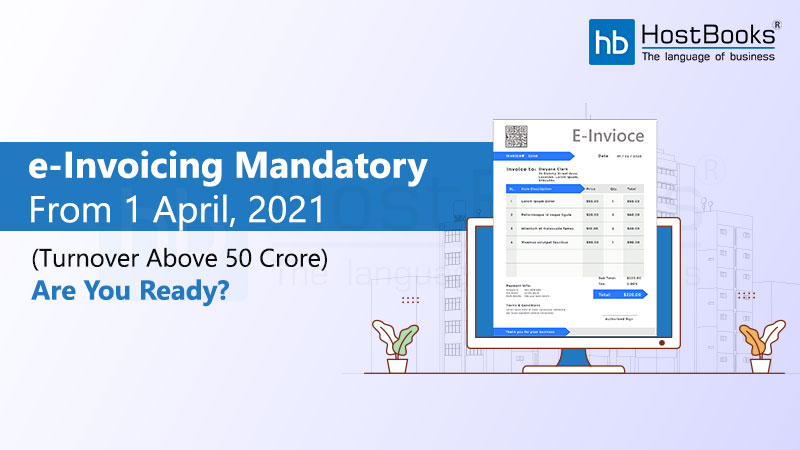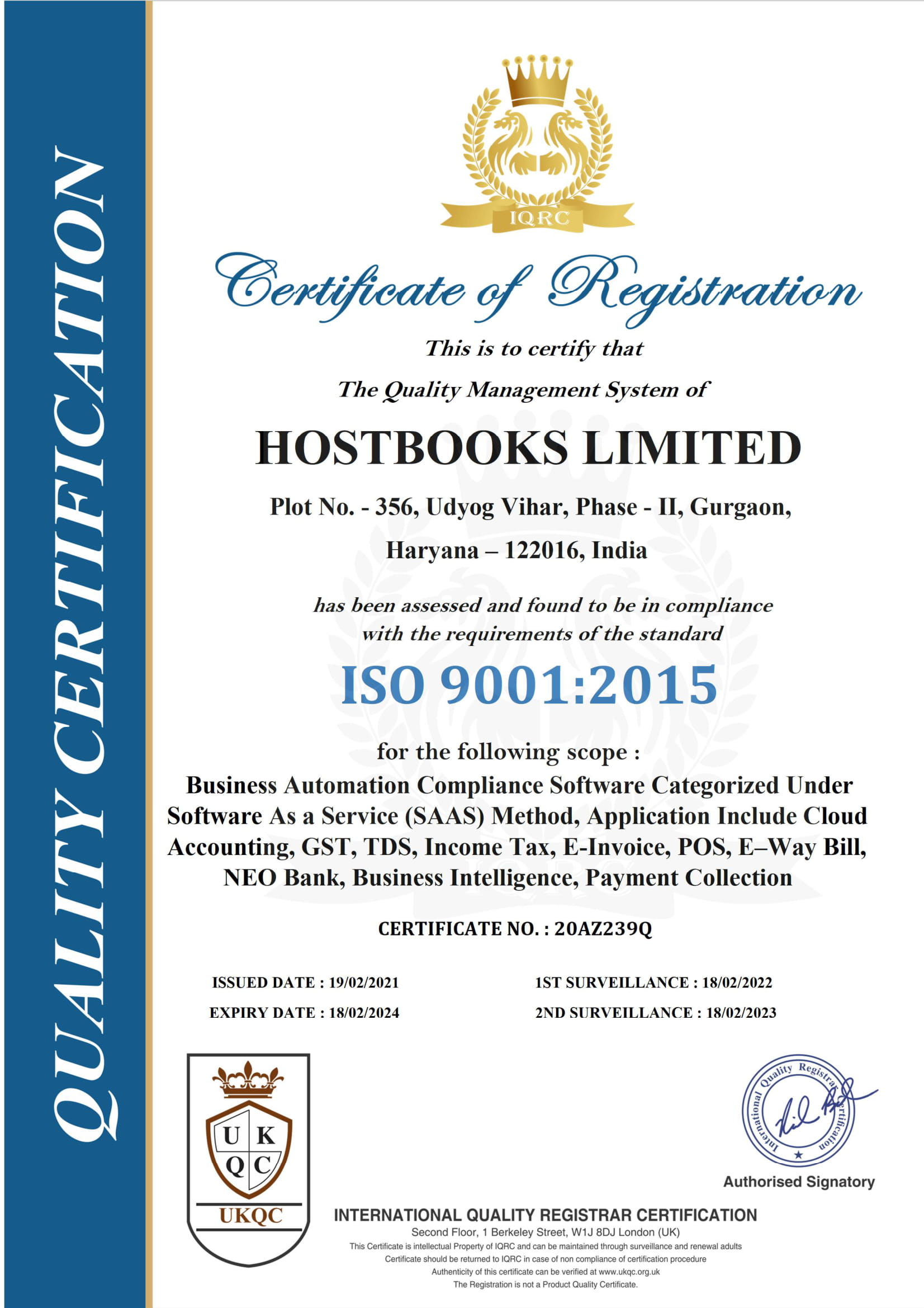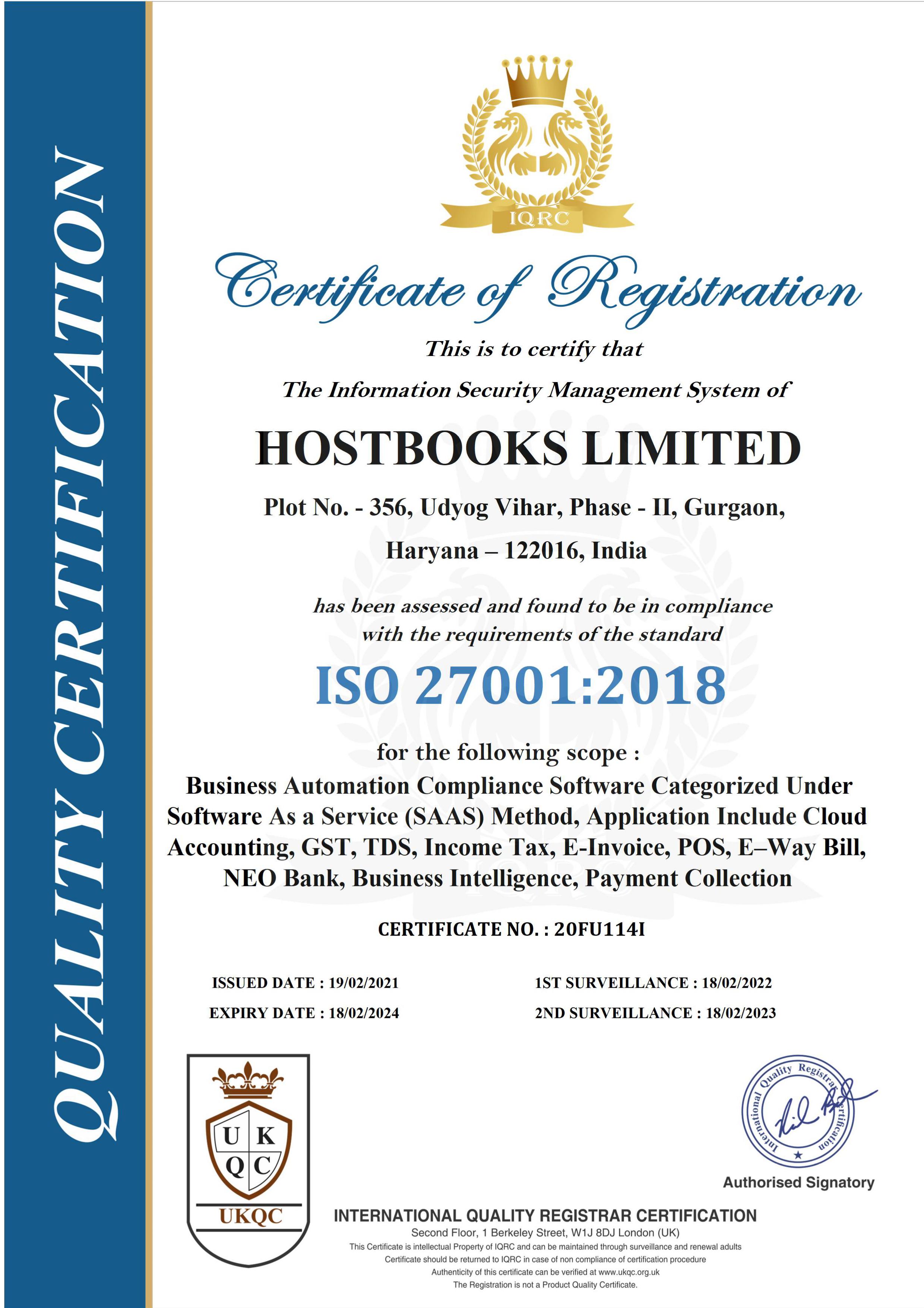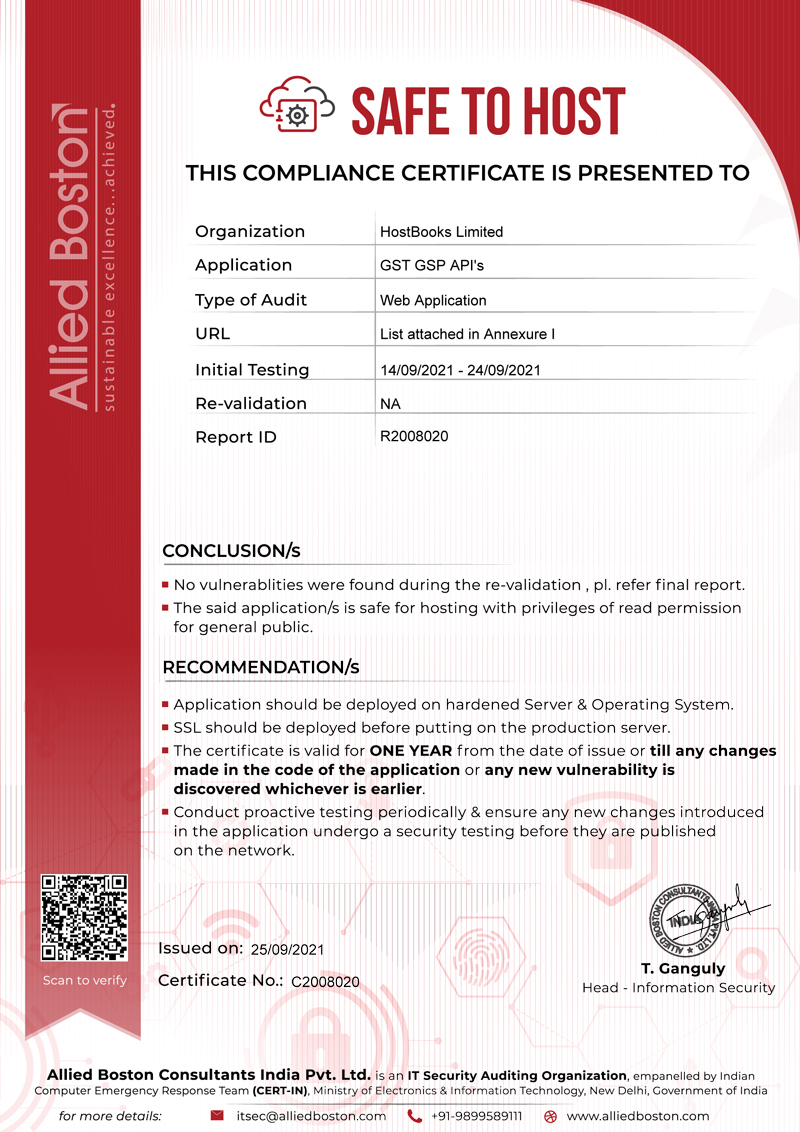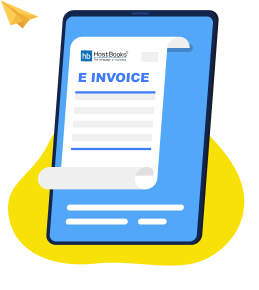
E-Invoicing for Businesses with Aggregate Turnover Exceeding ₹10 Crore Will Be Mandatory from October 1
August 4, 2022
e-Invoicing under GST is getting deeper and deeper into the Indian business landscape as Government is expanding its scope. Recently CBIC (Central Board of Indirect Taxes & Customs) Reduced e-Invoice Limit to Rs.5 Crores w.e.f. 01 Aug 2023. All businesses with a turnover exceeding 5 crores are mandated to generate e-invoices for all B2B transactions.
e-invoicing is a slightly complex procedure that requires integration with GST portal for bill generation. Let’s understand in detail the e-invoicing limit under GST rules and regulations, turnover limit, invoice generation time, and process. At the end we will also tell you how you can generate e-Invoices under GST with ease.
CBIC announced Notification No. 10/2023–Central Tax dated May 10, 2023, as an amendment to Notification No. 13/2020 – Central Tax, dated March 21, 2020, to reduce the e-invoicing turnover limit to Rs 5 Crore, to be implemented wef August 1, 2023. This means that e-Invoice generation will be Mandatory for every taxpayer with an annual aggregate turnover exceeding Rs 5 Crore in any year from 2017-18 onwards to generate e-invoices for B2B supplies w.e.f. August 1, 2023.
Recent Updates:
- 15 July 2023
- The National Informatics Centre (NIC) has recently announced that starting from July 15, 2023, all taxpayers with an Annual Aggregate Turnover (AATO) above 100 crore will be required to implement 2 Factor Authentication.
- 08 June 2023
- In order to facilitate the process of verifying e-Invoices and other related details, the Goods and Service Tax Network (GSTN) has introduced the E-Invoice Verifier App on June 08, 2023. This app provides a user-friendly and convenient solution for businesses to verify their e-Invoices and access relevant information.
Before let’s understand what e-invoicing really is.
What is e-Invoicing under GST Rule?
Prior to the introduction of-Invoicing term under GST rule bill generated digitally using a computer was considered as e-invoice.
However, in the context of the Goods and Services Tax (GST) regime, ‘e-Invoicing’ or ‘electronic invoicing’ refers to a system introduced by the government for the authentication of B2B invoices and certain other documents through the GST portal.
e-Invoicing is not about creating invoices directly on the GST portal. Instead, it involves submitting invoices that have already been generated in a standard format on a common e-invoice portal. This process helps automate various reporting requirements by entering invoice details just once.
In this electronic invoicing system, each invoice is assigned a unique identification number by the Invoice Registration Portal (IRP), which is managed by the GST Network (GSTN).
The information from these invoices is automatically transferred in real-time from the IRP to both the GST portal and the e-way bill portal. So taxpayers don’t need to manually fill details when filing GSTR-1 returns and generating part-A of e-way bills.
e-Invoicing Limit Over the Time

The implementation of e-invoicing under the Goods and Services Tax (GST) regime has witnessed a gradual expansion of its scope and applicability over time. Initially, when e-invoicing was introduced, it had a prescribed turnover threshold of business with turnover greater than 500 crore to generate electronic invoices.
However, as the system evolved and gained acceptance, the turnover limit for e-invoicing has been periodically revised and expanded to cover a larger segment of businesses. Now even the smaller businesses are covered under the e-invoicing rule in GST.
Here is a Table showing e-invoicing turnover limit applicable to different segments over time.
| Applicability Date | e-Invoicing Turnover Limit |
|---|---|
| 01.08.2023 | Rs 5 crore |
| 01.10.2022 | Rs 10 crore |
| 01.04.2022 | Rs 20 crore |
| 01.04.2021 | Rs 50 crore |
| 01.01.2021 | Rs 100 crore |
| 01.10.2020 | Rs 500 crore |
In future, there is a that the limit for e-invoicing will come further down.
Starting from 1st August 2023, it is mandatory for businesses that have an annual aggregate turnover of over Rs.5 crore in any previous financial year from 2017-18 to implement e-invoicing.
Example
Let’s say there is a company called XYZ Pvt. Ltd. that has been operating since 2015 and has seen inconsistent growth in its business. Their annual turnover over the year has been as follows.
| Year | Turnover |
|---|---|
| 2017-18 | 3.5 Cr |
| 2018-19 | 4 Cr |
| 2019-20 | 6 Cr |
| 2020-21 | 4.75 Cr |
| 2021-22 | 4.8 Cr |
| 2022-23 | 3.5 Cr |
Even though XYZ’s annual turnover in part 3 years is less than 5 cr, since the business has exceeded the threshold limit of 5 Crore in financial year.
e-Invoicing Applicability
Although e-invoicing primarily refers to Invoices, it covers other documents as well which needs to be submitted on the GST portal.
- 1. Tax Invoices: These are invoices generated by businesses for the supply of goods or services.
- 2. Debit Notes: Debit notes are issued by businesses to indicate an increase in the amount payable or a reduction in the tax liability.
- 3. Credit Notes: Credit notes are issued by businesses to indicate a decrease in the amount payable or an increase in the tax liability.
- 4. Invoice-cum-Bill of Supply: In certain scenarios, businesses may issue an invoice that also serves as a bill of supply for exempt, non-GST supplies or composition scheme.
Transactions Covered Under e-Invoicing

The following types of transactions require to go through the e-Invoicing process
- 1. Taxable Business-to-Business (B2B) Supply: This refers to the supply of goods or services between registered businesses where the recipient claims ITC.
- 2. Business-to-Government (B2G) Supply: This involves the supply of goods or services by businesses to government entities.
3. Export Sales: E-invoice is required when the sales are made to a foreign buyer. - 4. Reverse Charge Mechanism (RCM) Sales: Certain specified supplies, where the recipient is liable to pay the taxes instead of the supplier, the e-invoice is mandatory.
Transactions Exempt from e-Invoicing
The e-invoicing system does not cover the following documents, transactions, and businesses:
- 1. Exempted Sales with Bill of Supply: Sales that are exempt from taxes and require a bill of supply instead of a tax invoice are not included in the scope of e-invoicing.
- 2. Imports: The e-invoicing system does not cover invoices related to imports of goods or services.
- 3. Banks, Insurance Companies and Financial Institutions: Invoices generated by banks, financial institutions, and insurance companies are not included in the e-invoicing system.
- 4. Job Works: Invoicing for job works, which involve the processing or treatment of goods by another entity, is not part of the e-invoicing.
- 5. Movies and Cinema: Invoicing for the exhibition of cinematographic films on multiplex screens is not covered by e-invoicing requirements.
- 6. NBFC: Invoices issued by non-banking financial companies are not within the scope of the e-invoicing system.
- 7. Transport Companies: Invoicing for services provided by goods transportation and passenger transportation agencies falls outside the e-invoicing requirements.
- 8. Units in SEZ: Invoices generated by units operating in Special Economic Zones are not covered by the e-invoicing system.
- 9. Government Departments: Invoicing generation processes within government departments are not included in the scope of e-invoicing.
Normal Invoicing VS. e- Invoicing under GST
Here are the major differences between Normal Invoicing an e-Invoicing
| Systems | Before e-invoicing | After e-invoicing |
|---|---|---|
| Invoicing | Invoices generated through various software/excel | Invoices generated through e-invoicing software and imported using Excel/JSON or via API integration |
| GSTR-1 Filing | Manual uploading of invoice details in GSTR-1 return using excel/ Json | Seamless flow of invoice data for GSTR-1 preparation through the e-invoicing system |
| GSTR-2B reconciliation | Invoice information reflected in GSTR-2B after suppliers file GSTR-1 | Invoice information reflected in GSTR-2B for recipients without the need for manual data entry or import. |
| E-way Bill Generation | Manual import of invoices in Excel/JSON or via ERP for e-way bill generation | E-way bill generation facilitated through seamless flow of data from the e-invoicing system, eliminating the need for manual import of invoices |
| Import Method | Manual import of invoices using Excel/JSON or via ERP | Import of invoice details using Excel/JSON or via either directly or through a GST Suvidha Provider via API integration. |
| Data Flow | Manual steps involved in invoice data transfer | Automated and streamlined flow of invoice data for GSTR-1 preparation and e-way bill generation, facilitated by the e-invoicing system |
| Key Tool | Not applicable | The e-invoicing system acts as the key tool for generating, validating, and facilitating the seamless flow of invoice data. |
Reasons for e-Invoicing
The e-invoicing system brings several advantages for businesses and especially the Government. Here are the key benefits explained in simple terms:
- 1. Simplified Reporting: With e-invoicing, you don’t have to enter the same invoice details multiple times in different forms. Just upload it once, and the required information will automatically populate in various returns and documents.
- 2. Easy e-Way Bill Generation: The system captures the necessary information from the invoice, making it easier to generate part-A of the e-way bill. You only need to update the transporter details.
- 3. Automatic GSTR-1 Filing: By uploading invoices, the system automatically captures the business-to-business (B2B) details and includes them in the GSTR-1 return. This simplifies the process of reporting sales to the tax department.
- 4. Smooth Input Credit Verification: The e-invoice data reported to the tax department also appears in the buyer’s inward supply register (GSTR-2A). This reduces challenges in verifying input credit, streamlining the process for businesses.
- 5. Reconciliation Made Easier: The buyer can reconcile the invoice data received from the GST system with their purchase register. This helps with timely acceptance or rejection of the information during the new return filing process.
- 6. Curbing Tax Evasion: The e-invoice system maintains a complete trail of business-to-business invoices, allowing for system-level matching of input credit and output tax. This helps in reducing instances of tax evasion.
How to Generate e-Invoice?
Here are the steps to generate e-invoices.
- 1. Invoice Creation: Use accounting or billing software to create invoices in the prescribed e-invoicing format. It is not mandatory to use the government’s tax portal for generating e-invoices.
- 2. Invoice Registration Number (IRN) Generation: Suppliers can optionally generate a unique Invoice Reference Number (IRN) using a hash-generation algorithm. If not generated, the government’s IRP system will generate it.
- 3. Upload on Invoice Registration Portal (IRP): Upload the JSON file of each B2B invoice, along with the IRN if generated, on the Invoice Registration Portal (IRP).
- 4. IRP Validation of Invoice Information: The IRP validates the uploaded invoice against the central GST registry, ensuring uniqueness and authenticity. A digital signature and QR code are added to the invoice.
- 5. Digital Signature and QR Code Generation: The IRP digitally signs the invoice and adds a QR code to the JSON file.
- 6. E-Invoice Data Transmission: The validated invoice data is shared with the E-way bill and GST system for auto-population of GST Annexures.
- 7. E-Invoice Receipt: The digitally signed JSON file with IRN and QR code is sent back to the seller’s ERP system. The invoice is also emailed to the buyer.
Note:
These are the general steps in generating e-invoices. You can use HostBooks e-Invoicing Software to reduce the complexity in generating e-invoices.
Final Words
The mandatory implementation of e-invoicing for businesses with an annual aggregate turnover of over Rs. 5 crores will grip thousands of businesses across India and will smoothen the process generation, validation, and reporting of invoices.
We can expect e-invoicing system to eliminate duplication, reduce errors, and enhance transparency in business transactions, simplify the reconciliation process, and facilitate seamless data flow for GSTR-1 filings and e-way bill generation for smaller businesses as well.
E-invoicing is not a suggestion but a mandatory rule and no compliance can lead to severe penalties. Use HostBooks e-invoicing software to stay compliant with e-invoicing rule under GST.
FAQ’s about e-Invoicing Limit under GST
Q1. What is the limit of e-invoicing in GST?
Starting from August 1, 2023, e-invoicing is applicable to all businesses whose turnover has exceeded Rs 5 crore in any preceding 5 years.
Q2. What is the turnover limit for e-invoices?
Previously, the turnover limit for e-invoices was set at Rs 10 crore. However, the Central Board of Indirect Taxes and Customs (CBIC) has expanded the applicability, and now it is mandatory for businesses having a turnover greater than Rs 5 crore.
Q3. Is e-invoicing mandatory for businesses with a turnover of 5 crore?
Yes, e-invoicing is mandatory for businesses with a turnover exceeding Rs 5 crore. However, there are some exceptions to this requirement. Business units in Special Economic Zones (SEZ), certain B2C companies, exempt sales, and other specific categories may be exempted from the e-invoicing obligations.
Q4. Is e-invoicing mandatory for B2C businesses?
No, e-invoicing is not mandatory for B2C businesses. The primary focus of e-invoicing is on B2B (Business-to-Business) transactions.
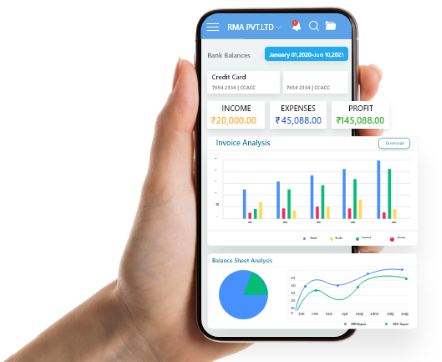
Try HostBooks
SuperApp Today
Create a free account to get access and start
creating something amazing right now!






